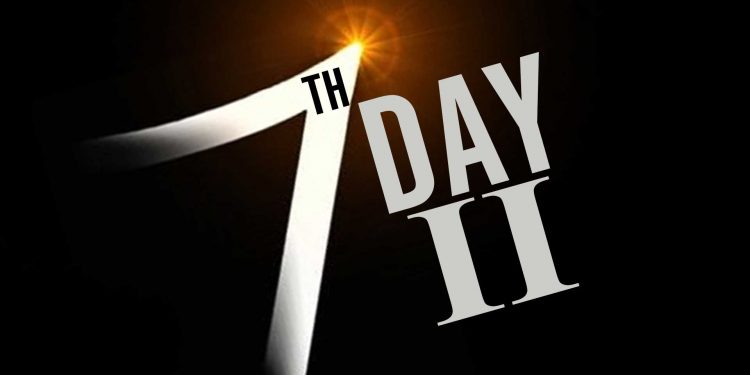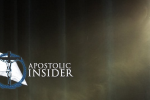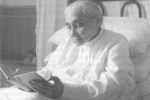Seventh-day Adventism and the William Miller Connnection – Pt. 2

When we left off last post, we had gone through William Miller’s first two key principles to understanding biblical prophecy. First, we had to understand that in prophecy, “a day always refers to a year.” And yes, this is demonstrably bogus, but there it is. Second, The seventy weeks of years, minus one week of years (or “490 weeks of years,” as it is presented in Daniel, seven of which, or “one week of years” apply only to the final destruction of the temple in AD 70 because Jesus employs the language of Daniel in Matt. 24:15 when he says the destruction of the Temple would be the fulfillment of “the abomination of desolation spoken of by Daniel the prophet.” And he got this partly correct, by the way) refers to 483 “years” (69 weeks of years) in Daniel 9:24-26, and begins with the declaration, says William Miller, that King Artaxerxes I decreed commanding that the Jews be allowed and funded to rebuild the Temple and city of Jerusalem, in Ezra 7:11-26. Also, Miller says, these years end with the coming of the Lord 2,000 years ago. And that decree, mind you, occurred in 457 BC. 483-457= 26 or 27 AD. And yes, as we saw, this is bogus as well.
But now to Miller’s third key principle:
In Daniel 8, we have the famous vision of the “ram and a goat” that ironically there is virtually no disagreement about as to its meaning among scholars because beginning in Daniel 8:15, the Angel Gabriel gives us the answers at the back of the book as to who they are! In Daniel 8:5 we see the large “he-goat” who comes across the land “from the west… without touching the ground” representative of the incredible rapidity by which Alexander would conquer the known world by 332 B.C. And with “a conspicuous horn between his eyes” which represents Alexander. In fact, Daniel 8:21 tells us, “The he-goat is the King of Greece, and the great horn is its first king.” Any questions? And it goes on in equally plain terms.
Then, this goat crushes a “ram with two horns” (in verse 7) which represents the Persians (the Medes and the Persians who became one empire, which verse twenty tells us). And then, when the goat is at its strongest, and began to “magnify himself exceedingly,” (verse 8 says) “the great horn was broken.” Alexander dies. And then “instead of it, four horns arose toward the four winds of heaven,” or covering the known earth (again, 8:8). This represents the four kingdoms that developed after Alexander’s death, with four rulers. You had the “Ptolemic” Empire in the South in Egypt, the “Seluecid Empire” in the East, “Antigonid Empire” in the North, and the “Macedonian Empire” in the West.
Here’s a key for us: in verses 9-12 we find “the little horn,” which would be Antiochus IV, an absolute monster, that arises from one of the four horns (that would be the Seluecid Empire, where the Maccabean revolt would occur in 165 B.C.), and Antiochus IV then is prophesied to commit what Daniel would refer to here in 8:13 and later in Daniel 12:11 again as “the abomination of desolation.” And again, Jesus would use that same phrase to refer prophetically to the final destruction of the temple in Matt. 24:15 to which the old temple was a precursor. This text prophesies that Antiochus IV would “overthrow the sanctuary” (8:11 says) and “cause the perpetual sacrifice to cease” (both here in Dan. 8 and Dan. 12:11). This vision causes Daniel to “lay sick for some days” after seeing it, according to 8:27. But Daniel then overhears in his vision, a conversation between two angels that becomes key for here us here in verses 13-14:
Then I heard a holy one speaking; and another holy one said to the one that spoke, “For how long is the vision concerning the continual burnt offering, the transgression that makes desolate, and the giving over of the sanctuary and host to be trampled under foot?” [14] And he said to him, “For two thousand and three hundred evenings and mornings; then the sanctuary shall be restored to its rightful state.”
In context, this text clearly refers to the length of time that the “continual sacrifice” would cease. It would cease for a little over three years. And by the way, Miller did not even get the number of “days” right here. Daniel 8 did not use the term “days.” It says 2300 “evenings and mornings” which actually refers to the “evening and morning” sacrifices so actually we are talking about 1150 actual days, or just over three years. Later, in Daniel 12, this is confirmed because Daniel will refer to this same period of time and he would actually use the term “days” (Heb. – yom) and he plainly says “1290 days.” The discrepancy between 1150 in Dan. 8, and 1290 days in Dan. 12 may be because of a copyist’s error, or it may be to indicate that the number is not to be taken too strictly literally. I tend to think it is the latter.
Now, having said this, you are not going to believe this, folks, but William Miller’s third key to understanding Daniel and to understanding the end times is to say these 2,300 “evenings and mornings” refers to 2,300 years because remember? “A day = one year!”
And if we pushed him on this, what would he have probably said? “Get away from me kid, you bother me!”
And once again, we need to understand, this principle did not end with Miller. Ellen White herself would declare, in “the Great Controversy” (chapter 23, page 409):
The Scripture which above all others had been both the foundation and central pillar of the advent faith was the declaration: “Unto two thousand three hundred days; then shall the sanctuary be cleansed” (Daniel 8:14).
Crazy!
But now we have to move to Miller’s fourth key to understanding prophecy in Scripture. And it is this: William Miller arbitrarily connected this prophecy with the prophecy of the proclamation of the rebuilding of the temple and city of Jerusalem in 457 BC, a date he got wrong as well as we’ve seen. But folks, there is absolutely no biblical foundation for connecting the 2,300 “evenings and mornings” from Daniel 8 to the bogus 457 BC date from Daniel 9 to begin with. This makes no sense! But remember, with William Miller’s biblicism, you don’t have to make sense of it! You just have to have faith!
The devastating conclusion that necessarily follows
If these four principles were actually true, as taught by William Miller, that would mean that Jesus Christ would come again in 1843. In fact, Miller himself first calculated it to be in October (October because that is the month of the Day of Atonement, the month of Tishri, on the Jewish calendar. It can be in September or October depending upon the lunar calendar). He calculated the Second Coming of Christ to occur necessarily in October of 1843 because you take 2300 and subtract 457 and you get 1843?
It didn’t happen, folks!
When this didn’t happen, some quick calculating was done and Miller and his followers said it would actually be Oct. 22, 1844, again on the Day of Atonement on the Jewish calendar. They attempted to claim they were off one year due to some miscalculations based on the lunar calendar.
Obviously, Jesus did not come and this became the foundation and origin of what would be later called “the great disappointment of 1844.”
Remarkably there were many offshoots that attempted to remain faithful to the principles Miller established: The American Millenial Association, Advent Christian Church, Church of God – General Conference, Church of God – Seventh Day, Seventh day Baptists, and of course, the Seventh-day Adventists (and their modern offshoot some of you may have heard of, “the Branch Davidians,” who started in 1930, but after the David Koresh affair they changed their name to “Students of the Seven Seals.”) Some of these would reject Ellen White as a prophet, but would continue with the basic principles of Miller (like the Seventh day Baptists and Church of God Seventh Day).
Only the SDA would indeed remain entirely faithful to Miller, but not only Miller, but to the one who would save Miller’s teachings for the whole world: Ellen Gould White. And again, I must say, she is truly a fascinating woman, folks!
A quick biography of Ellen Gould White
Ellen Gould Harmon, before she became Ellen Gould White (she married James White when she was 18, in 1846), was born in November of 1827. White herself wrote of how she saw William Miller preach when she was just 12 years-old, in 1840, at the height of the Adventist frenzy, and she was enraptured. She had a tremendous conversion experience pouring tears and weeping, and she then began to have visions at the age of 17, in 1844. She would have allegedly over 2,000 such visions that became the foundation of everything she believed and taught. And these visions are all recorded in the nine volume set called “Testimonies for the Church.”
She was immediately taken with the prophecies of Miller and never gave up on him, even in the face of the Great Disappointment. And by the way, neither does the SDA denomination. They still hold to everything Miller and White would teach… well… sort of. They had to really modify things as we will see!
But you know, you’ve got to wonder? “Oct. 22, 1844?” Really? Didn’t anybody ever toss out verses of Scripture like Mark 13:32? “No man knows the day, nor the hour?” You’d think? Right?
Anyway, after the devastation of the Great Disappointment, you could imagine that they lost a lot of followers. There was a mass exodus. However, a man that was part of the movement named Hiram Edson came up with a way rather clever, not to mention, unbiblical, but a way to reconcile what had happened. He came up with the idea that the SDA teaches to this day, that in 1844, Jesus’ coming was not visible and on earth. And, by the way, the JW’s would latch onto a similar idea decades later, but that’s another post! Edson claimed Jesus actually “cleansed the sanctuary” in heaven, on Oct. 22, 1844, entering into the very holy of holies as a precursor to his visible coming that would happen very soon thereafter.
And wouldn’t you know it? Edson came up with this just days after the great disappointment, and then Ellen White had a vision within months that gave heavenly confirmation that it was true! How convenient!
So, here’s the rub: White and the SDA says, “Christ had left the holy place or sanctuary in order to enter in the Holy of Holies, or the inner sanctuary and there he performed the closing work of the atonement.”
Really?
Here are the problems:
1. The 2300 “mornings and evenings” of Daniel 8:14 don’t even refer to 2300 “days.” Daniel 8:14 doesn’t even use the term “day” at all. The “mornings and evenings” it refers to refer to the morning and evening sacrifices. Thus, it is actually talking about roughly 1150 days, which is a couple months over 3 years. Sound familiar? This is the amount of time that Antiochus IV would cause the continual sacrifice to cease. In fact, according to I Macc. 1:54 and 4:52-53, “On the fifteenth day of the month of Chislev, in the year [168-7 BC] 145 (using Seleucid era dating, from the time of the founding of the “Seleucid Empire”), the king erected the horrible abomination upon the altar of holocausts, and in the surrounding cities of Judah they built pagan altars.
Then, in I Macc. 4:52-53, the sacrifice would be restored, just over 3 years later!
As confirmation of this general timeline, Daniel 12:11 will refer to the duration of the “abomination of desolation” as 1290 days, or again, just over 3 years. And the New Testament also refers back to this as 3.5 years, for example, in Rev. 13:5.
2. The problem with saying Jesus “entered into the holy of holies” first in 1844 is the Book of Hebrews does not agree with you.
Heb. 6:19-20: We have this as a sure and steadfast anchor of the soul, a hope that enters into the inner shrine behind the curtain, [20] where Jesus has gone as a forerunner on our behalf, having become a high priest for ever after the order of Melchiz’edek.
Heb. 9:3-12: Behind the second curtain stood a tent called the Holy of Holies, [4] having the golden altar of incense and the ark of the covenant covered on all sides with gold, which contained a golden urn holding the manna, and Aaron’s rod that budded, and the tables of the covenant; [5] above it were the cherubim of glory overshadowing the mercy seat. Of these things we cannot now speak in detail.
[6] These preparations having thus been made, the priests go continually into the outer tent, performing their ritual duties; [7] but into the second only the high priest goes, and he but once a year, and not without taking blood which he offers for himself and for the errors of the people. [8] By this the Holy Spirit indicates that the way into the sanctuary is not yet opened as long as the outer tent is still standing [9] (which is symbolic for the present age). According to this arrangement, gifts and sacrifices are offered which cannot perfect the conscience of the worshiper, [10] but deal only with food and drink and various ablutions, regulations for the body imposed until the time of reformation. [11] But when Christ appeared as a high priest of the good things that have come, then through the greater and more perfect tent (not made with hands, that is, not of this creation) [12] he entered once for all into the Holy Place, taking not the blood of goats and calves but his own blood, thus securing an eternal redemption.
It is hard to imagine that people fall for this interpretation of Jesus entering into the Holy of Holies in 1844. But they do.






